Particle Systems (2D)¶
Intro¶
A simple (but flexible enough for most uses) particle system is provided. Particle systems are used to simulate complex physical effects such as sparks, fire, magic particles, smoke, mist, magic, etc.
The idea is that a “particle” is emitted at a fixed interval and with a fixed lifetime. During its lifetime, every particle will have the same base behavior. What makes every particle different and provides a more organic look is the “randomness” associated to each parameter. In essence, creating a particle system means setting base physics parameters and then adding randomness to them.
Particles2D¶
Particle systems are added to the scene via the Particles2D node. However, after creating that node you will notice that only a white dot was created, and that there is a warning icon next to your Particles2D node in the inspector. This is because the node needs a ParticlesMaterial to function.
ParticlesMaterial¶
To add a process material to your particles node, go to Process Material in your inspector panel. Click on the box next to material, and from the dropdown menu select New Particles Material.

Your Particles2D node should now be emitting white points downward.

Texture¶
A particle system uses a single texture (in the future this might be extended to animated textures via spritesheet). The texture is set via the relevant texture property:
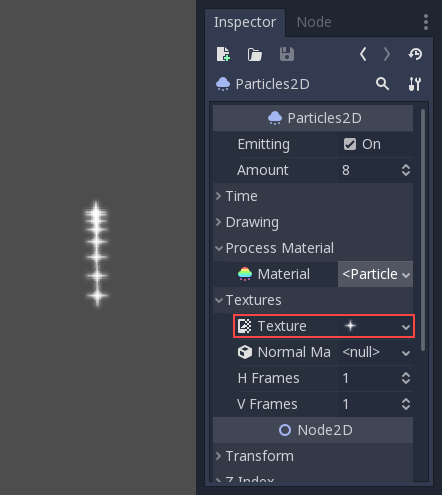
Time Parameters¶
Lifetime¶
The time in seconds that every particle will stay alive. When lifetime ends, a new particle is created to replace it.
Lifetime: 0.5

Lifetime: 4.0
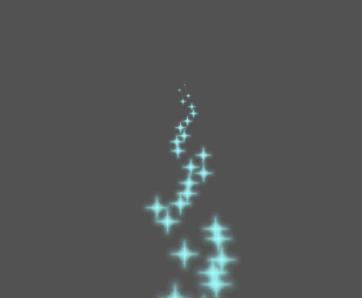
One Shot¶
When enabled, a Particles2D node will emit all of its particles once and then never again.
Preprocess¶
Particle systems begin with zero particles emitted, then start emitting. This can be an inconvenience when loading a scene and systems like a torch, mist, etc. begin emitting the moment you enter. Preprocess is used to let the system process a given number of seconds before it is actually drawn the first time.
Speed Scale¶
The speed scale has a default value of 1 and is used to adjust the
speed of a particle system. Lowering the value will make the particles
slower while increasing the value will make the particles much faster.
Explosiveness¶
If lifetime is 1 and there are 10 particles, it means a particle
will be emitted every 0.1 seconds. The explosiveness parameter changes
this, and forces particles to be emitted all together. Ranges are:
- 0: Emit particles at regular intervals (default value).
- 1: Emit all particles simultaneously.
Values in the middle are also allowed. This feature is useful for creating explosions or sudden bursts of particles:
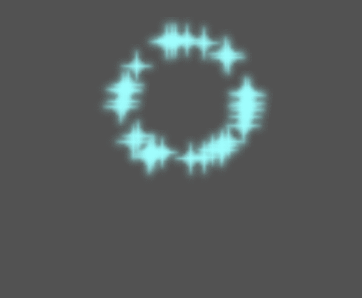
Randomness¶
All physics parameters can be randomized. Random values range from 0 to
1. The formula to randomize a parameter is:
initial_value = param_value + param_value * randomness
Fixed FPS¶
This setting can be used to set the particle system to render at a fixed
FPS. For instance, changing the value to 2 will make the particles render
at 2 frames per second. Note this does not slow down the particle system itself.
Fract Delta¶
This can be used to turn Fract Delta on or off.
Drawing Parameters¶
Visibility Rect¶
The W and H values control width and height of the visibility
rectangle. The X and Y values control the position of the upper-left
corner of the visibility rectangle relative to the particle emitter.
Local Coords¶
By default this option is on, and it means that the space that particles are emitted to is relative to the node. If the node is moved, all particles are moved with it:

If disabled, particles will emit to global space, meaning that if the node is moved, already emitted particles are not affected:
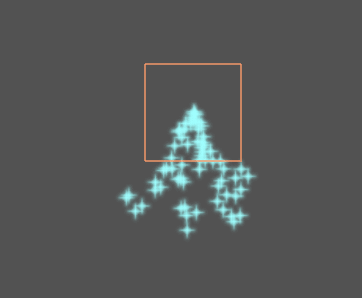
Draw Order¶
This controls the order in which individual particles are drawn. Index
means particles are drawn according to their emission order (default).
Lifetime means they are drawn in order of remaining lifetime.
ParticlesMaterial settings¶
Direction¶
This is the base angle at which particles emit. Default is 0 (down):

Changing it will change the emissor direction, but gravity will still affect them:

This parameter is useful because, by rotating the node, gravity will also be rotated. Changing direction allows them to be separated.
Spread¶
This parameter is the angle in degrees which will be randomly added in
either direction to the base Direction. A spread of 180 will emit
in all directions (+/- 180).
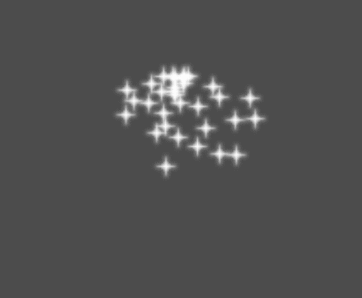
Initial Velocity¶
Linear velocity is the speed at which particles will be emitted (in pixels/sec). Speed might later be modified by gravity or other accelerations (as described further below).

Angular Velocity¶
Angular velocity is the initial angular velocity applied to particles.
Spin Velocity¶
Spin velocity is the speed at which particles turn around their center (in degrees/sec).
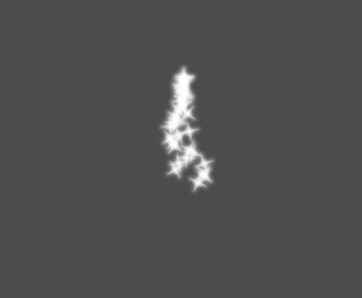
Linear Acceleration¶
The linear acceleration applied to each particle.
Radial Acceleration¶
If this acceleration is positive, particles are accelerated away from the center. If negative, they are absorbed towards it.

Tangential Acceleration¶
This acceleration will use the tangent vector to the center. Combining with radial acceleration can do nice effects.
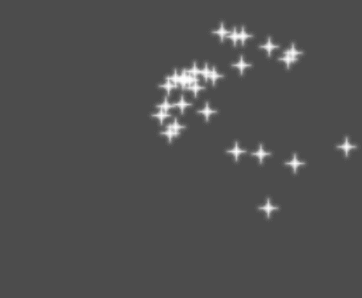
Damping¶
Damping applies friction to the particles, forcing them to stop. It is especially useful for sparks or explosions, which usually begin with a high linear velocity and then stop as they fade.
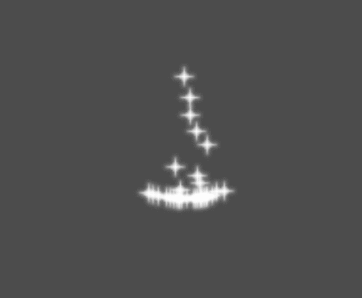
Angle¶
Determines the initial angle of the particle (in degress). This parameter is mostly useful randomized.

Color¶
Used to change the color of the particles being emitted.
Hue variation¶
The Variation value sets the initial hue variation applied to each particle. The Variation Rand value controls the hue variation randomness ratio.


